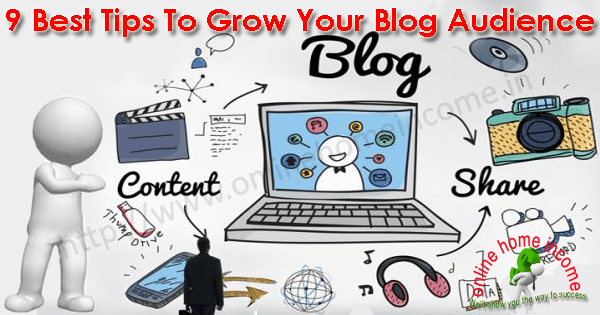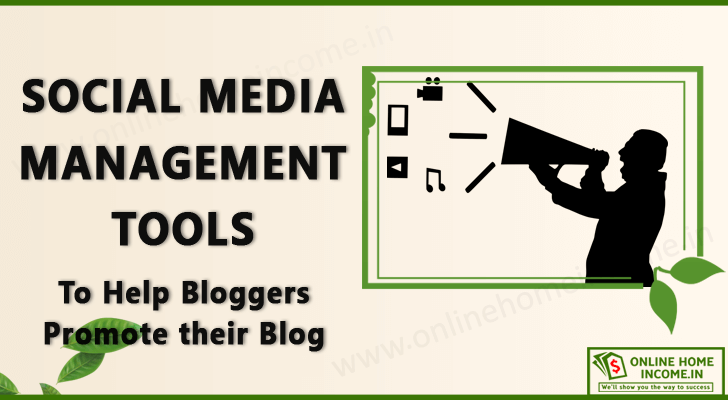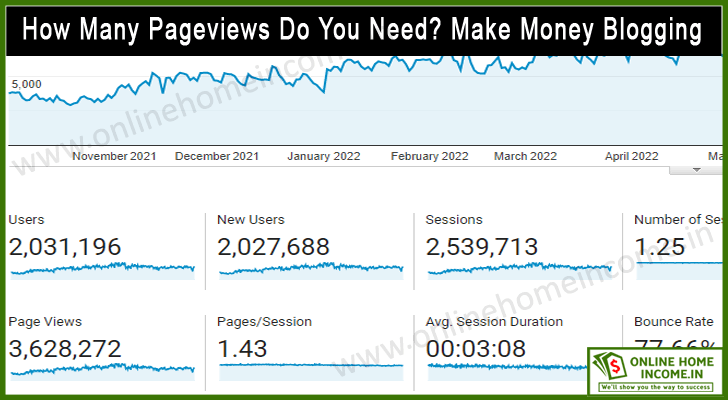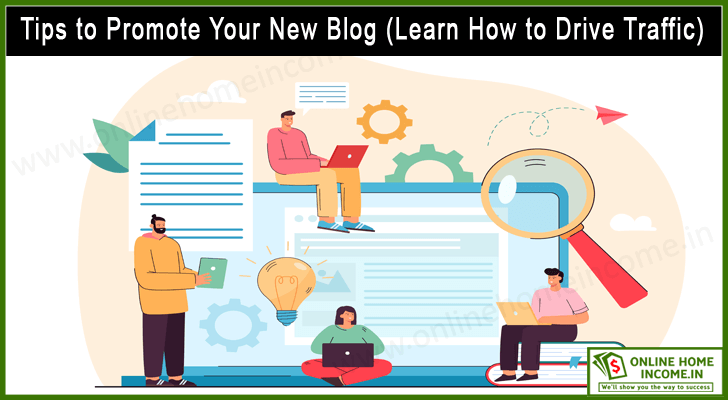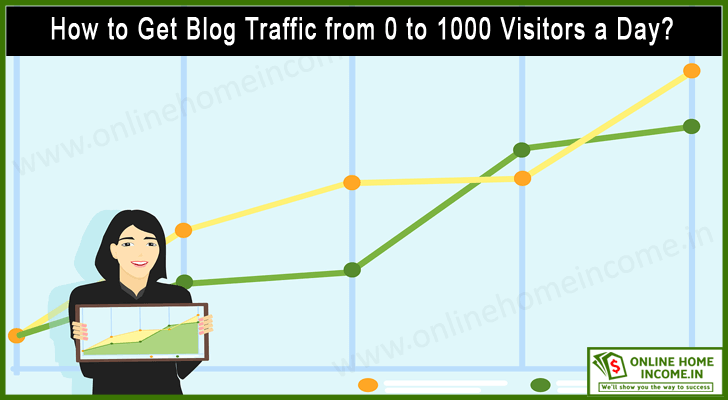Let’s bring to an end a long debate, on why is my blog not getting traffic? Discover the reasons today and fix them to improve your blog SEO.
When I launched my blog in 2013, I had no idea what I was doing. In the initial stages, I was worried about why is my blog not getting traffic. What’s wrong with my approach (or) activity?
I watched many videos and did a little research on how to grow my blog. On average, I found the utmost key is publishing high-quality content consistently.
Blogs are so crucial for an effective marketing strategy. It helps businesses to drive more quality traffic and increase their domain authority.
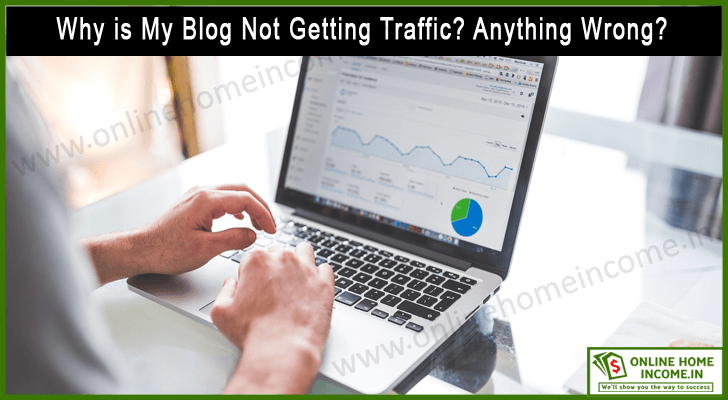
⇒ Does $10 a day in your bank will make you happy? If so, here is an exciting opportunity for you to start free.
⇒ All you need is a Smartphone with an Internet connection. | Join today!
A business website associated with a blog tends to get more inbound traffic from search engines. Blogging can be fun if you are passionate about the topic and having an interest in writing quality articles.
It is frustrating if Google Analytics shows zero or very little traffic to your blog or website. It means people are not visiting your blog or reading your blog post.
You feel lonely. It is like, you write a book, and it remains on your table. If people are not visiting your blog, no one will click ads or buy the products (or services) you recommend.
You will feel sick and quit blogging in the end. But it will not happen this time after you read the entire article. It will make you understand your mistakes and help you solve the issue.
Why is My Blog Not Getting Traffic?
Your blog may not be getting traffic due to several reasons.
- Poorly written content, lack of best SEO practices, slow loading speeds, and your content does not address the audience’s needs.
- If your blog does not get views, could you check whether your blog content is written for users?
Another reason might be the blog’s age. New bloggers have to wait for a few months to gain some traction.
So, what is the solution to get more traffic to my blog?
— Promise yourself to produce only quality content that really helps someone.
- Start from the keyword research part again to ensure the keywords have a decent search volume.
- Then, perform a competitive analysis to understand the existing content types that are ranked already.
- Now, find your target audience’s pain points, questions, problems, and concerns.
- Finally, craft a well-researched content covering in-depth information on the topic.
Do not forget to properly structure the content and optimize your blog post for SEO.
Remember, delivering value to your audience sends a positive signal to the search engines. This pattern boosts your organic ranking.
Now, let us study the 11 core reasons preventing you from getting traffic to your blog.
1. Keyword Research is Wrong (or Not Proper)
Keyword research is the most significant part of ranking a blog post on search engines. All your blog posts are to be created around the keywords.
If the articles we write do not satisfy the user’s intent, then there is no purpose in publishing blog posts.
Keyword research is a crucial SEO activity that helps bloggers determine the usual search terms and phrases.
A blogger must understand what people are searching for to write content that resonates with the user’s search intent.
Keyword research is simple, and as a blogger, it’s your foremost duty. Find the keywords that can appear on the top and propel you to the first page of the search engine result pages.
Maintain a keyword density of 1% to 3% inside the article that helps search engines understand your content.
Keywords help your blog rank higher and put you as an authorized source of information. When you become an authority in the niche, you can drive more traffic to your blog posts.
Many keyword research tools are available – both free and paid – to help bloggers find their niche keywords. I prefer the Google Keyword Planner tool over Semrush and Ahrefs.
2. Can You Understand Your Readers?
Are you worried about why is my blog not getting traffic? Maybe you fail to understand your audience’s pain point or search intent.
The core purpose of a successful blog is to provide helpful and interesting information at the right time. You should have a clear understanding and knowledge of your target people before you write a blog post.
The article must help readers to find a solution or solve a problem. How do you write articles if you do not understand the reader’s search intent or purpose?
Even though you have done better keyword research, ask at least once about the intention of the keyword. Here are some key questions to ask before you write an article.
- What kind of information and resources do people search for?
- What exactly do they want to know from the Internet?
- Try to understand the exact buyer’s personas.
Go through your previous articles once to see if they have buyer personas. Based on the knowledge, you want to create content that helps satisfy your blogging needs.
Do not write on every topic that comes to your mind. You are not going to drive any traffic. Listen to your audience carefully and create content that resonates with them.
3. Does Your Meta-Title Create Curiosity?
I have written an in-depth article about the importance of the Meta-Title. Meta-Title plays a crucial role in SEO and helps to drive more traffic.
When people search for something on the Internet, the Meta-Title is the first thing they see in the search results.
Search engines and humans look at the headline first and decide whether or not to read the article. You want to create a captivating title that entices the readers to click your results.
Take time to build a compelling title that pulls the readers to click on it from the search results. Bloggers use various types of titles to attract readers to click on their links from the search results.
A few interactive headlines are listed below:
- How-To Titles
- Reason Why Title
- Emotional Title
- USP Title
- Question-Based Title
- Purposeful Title
Make sure the title attracts more readers and increases organic traffic. Include your primary keyword at the beginning and incorporate the content message between 55 to 70 characters.
If your Meta-Title goes beyond the 70-character limit, then it will get trimmed by the search engines. Hence, look through the post titles again and revamp them to attract audiences.

4. Are You Creating Evergreen Content?
Find the topics that serve the user’s intent for a long time. It is one way to drive traffic and stop worrying about why is my blog not getting traffic?
Don’t worry about finding an evergreen topic, as it’s too easy. The blogging business is simple and relates your daily activities to create better content.
Let me give some examples of the evergreen topic below.
- How to drive more traffic to my blog?
- What is On-Page SEO, and why is it needed?
- How to grow my blog audience consistently?
The above are a few evergreen topic ideas, and the blogs that published the above article are still getting traffic.
People need updated information on the above topics. Hence there is always a decent search volume available. It is too simple to find evergreen content ideas.
Just watch “People Also Ask” from the search engine result pages. This widget covers most issues that people face today.
If you can crack the myth and produce an in-depth article on those topics, you can win for sure.
5. Are You Adding Images To Your Blog Post?
Images speak 1000 times more than words. A single image can convey the message of a 1000-word article.
Readers nowadays feel annoyed reading a long text. It is daunting to read such a 1000, 2000-word-long post.
Create relative images, and place them in the appropriate place to boost reader engagement. Pinterest is a popular social media that shares images only.
So, create sharable images to let your readers share your post on Pinterest. You can add these images, videos, gifs, and infographics to boost engagement.
Create images for yourself using tools like Canva, Adobe Photoshop, or Adobe Illustrator. Another way is you can hire a graphic designer to create images for your blog posts.
These images must pass the following conditions.
- Image Name: Add a clear, descriptive name without special characters. Image names should be in lowercase. Use hyphens to separate each word.
- Image Alt Text: It can be similar to the image name and should be descriptive.
- Image Width & Height: Declare the image dimensions in pixels, em, or percentage.
- Image Size: Compress the images before uploading them because large image takes more time to load.
- Image Format: Earlier, we used several different image formats like jpeg, png, jpg, SVG, etc. But, nowadays, search engines insist on using webp format for faster load time.
If you don’t have high-quality pictures of your own, don’t worry, you can buy from sites like Shutterstock, IStockPhotos, etc.
There are a few sites like Pixabay, where you can download free images for public use. You should follow Image SEO properly to help search engines understand the purpose carefully.
6. Are You Promoting Your Blog on Social Media?
I see many bloggers do not have active social media profiles. When I ask them, they say they don’t have time to manage their social platforms.
Social Media is a true goldmine for me, and it helps me to drive quick blog traffic at my beginning stage. If you start a new blog (or) at your initial crawling stage, you should focus on Social Media.
A study shows that people spend more than six hours daily on social media. Maybe your target audience is hanging socially, but you are not promoting it here.
When you think about why my blog is not getting traffic, poor social media promotion may be a reason. Search Engines see social signals as an important ranking factor.
For example, what if you start a jewelry shop in a remote place where there is no people traffic? But you have all the latest designs, and the price is affordable.
If people don’t know about your existence, your business will not grow. Even though you publish an in-depth article and do not promote it, no one visits your blog.
People don’t know about your blog’s existence. Therefore, prepare a social media promotion strategy and leverage different platforms to drive more traffic.
Stop worrying and start promoting your blog articles. I advise all bloggers to create an account on Facebook, Twitter, Linkedin, and Instagram.
Add your photo as a profile picture and a banner describing your blog’s purpose. Start networking with like-minded people, meet influencers, and find a way to distribute your content.
7. Focus on Blog Loading Speed (Target for 3 seconds or less)
Another reason on why is my blog not getting traffic is the slow loading speed.
If a user lands on an article on your blog and find themselves waiting for minutes for your page to load, they leave your blog.
Are you aware of Google Core Web Vitals, and have you run a test at Google Page Speed Insights?
These metrics are created to ensure a better user experience and provide information as soon as possible.
Again it is a big subject, and I want to keep things short and understandable.
Activity: Run a speed test on GTMetrix, and Google Page Speed Insights. No further action is necessary if you score grade A (or) B in GTMetrix or above 90 in Google. Else, you are in danger.
- WordPress is a resource-intense application, and it’s time to optimize your WordPress Blog. Hire an optimization expert (or) WhatsApp me at 96554 55140 to fix the loading speed issue.
- Are you using CDN (Content Delivery Network) for your blog? If not, integrate your site with Cloudflare or Bunny CDN.
- Reduce the number of HTTP requests such as JS, CSS, Images, and fonts.
- Opt for an optimized WP Theme like Thrive Themes, Generate Press, etc.
- Web Hosting services may be the culprit. Analyze the server and apply necessary changes or choose a different host.
People don’t wait for a long time to see your content, and if it does so, you will not bring traffic. Follow the above advice and make your blog load faster.
8. Are You Building Links to Your Blog?
Many bloggers think that publishing a blog post is their only responsibility. But, different activities need to be done after publishing the post.
One of the primary activities is building links from other websites and blogs. Link Building is an off-page activity of building contextual backlinks to our blog from other sources.
If we create a decent number of quality backlinks, we will get more chances of getting a top position in organic results.
Our blog authority will go high, and our brand popularity will increase. Different methods are adopted to get backlinks from the authoritative brand.
- Among those methods, Guest Posting is the popular off-page activity that brings quality backlinks to your blog.
- You create a strategy to build links along with producing high-quality content. You can also do blog commenting on other popular blogs.
- Participate in online forums, Q&A sites, Quora, Medium, and medium-like sites to answer other people’s questions. It helps you gain traction and build authority over time.
Also, you will get no-follow backlinks from these websites that help increase your organic reach.
Spend two hours daily to comment on other blogs, send 10 – 15 guest post request emails, answer a minimum of 10 Quora questions, etc.
You will gain more knowledge and also drive quick traffic to your blog.
9. You Are Not Using All Marketing Methods (Email Marketing)
Bloggers nowadays are so worried and struggle to drive traffic to their blogs. Bloggers still believe the organic ranking position is the only traffic source.
But there are other sources like direct, referral, and social. Email Marketing brings you direct traffic to your blog.
Your blog subscribers are the real gem and form the first line of the audience. They are the first to know any updates from your blog.
I advise new bloggers to collect emails from their visitors from day one. Don’t worry about the search engine indexing and low traffic numbers.
Instead, send newsletters to your subscribers (without spamming their inboxes) and drive direct traffic. As more people visit your blog, the average time on the blog increases (a good ranking signal).
So how do you collect visitors’ emails?
- Create a landing page using a page builder like Thrive Architect.
- Start collecting emails and build an email list.
- Integrate any email marketing system like GetResponse, Mailchimp, etc.
- Start sending newsletters and new blog post updates to those subscribers.
You will see people landing on your blog as a result of sending emails. Email marketing is booming, and it’s the right time to build your own list.
Set up automation to create more engagement with your subscribers. It will not only drive traffic but also help increase your trust and authority.
10. You Are Not Writing an In-depth Article
Gone are the days when even a 500-word article drives thousands of traffic to a blog. But today, the SEO ecosystem is different, and search engines put more weight on long content.
I prefer publishing an article of a minimum of 2000 words long. Long doesn’t mean the total number of words, but the deep explanation of the subject.
You want to perform deep research about the topic and cover all available information in the article. A larger number of words means more information than the article has.
You want to add more value to the community by publishing high-quality long articles. I spend more than a week crafting one engaging post for my audience. Nothing will work unless you are passionate.
So only, I always insist bloggers develop a passion for their blogging niche. Follow my 4-hour content writing principle.
- First 30 minutes – Keyword Research and Competitor Analysis.
- Next 1.5 hours – Create an article outline and write the first draft from the available information.
- Another 1 hour – Grammar Check, Proofreading, and re-write (if required).
- Last hour – Addition of Images, On-Page SEO, and Preparation for Publishing the article.
Without passion and interest, you cannot devote time to writing an interesting article that entices readers’ curiosity.
I have blogged for more than ten years, and I at no time felt discomfort with my blog. I always enjoy writing more articles for my audience.
Don’t forget to add images and media to boost engagement because readers may be bored reading lengthy articles.
11. You Are Not Consistent in Blogging Activity
Starting a blog is easy but running a successful blog is a daunting process. You can think 1000 times before you start but don’t think later.
The success of a blog is about being consistent in all activities like publishing blog posts and promoting your blog.
To grow as an authority blogger, you want to be persistent and consistent. Let me share with you some tips.
Follow my morning schedule to grow your blog audience described in another article.
- Write at least 1000 words daily for a blog article, social media, and email marketing.
- Spend 1 to 2 hours daily on Facebook, Twitter, and Linkedin.
- Create a habit of networking with other bloggers and influencers.
- Talk to your readers through blog comments.
- Participate in Quora, Reddit, and Medium.
Plan and prepare a timetable that includes all blogging activities. Successful bloggers share their stories often but do not mention their dark side.
It is full of sacrifices, sleepless nights, struggle, and frustration only to be consistent in content creation. Stay focused and stop worrying about why is my blog not getting traffic.
Your success comes closer as long as you consistently publish articles and share them on social media.
Conclusion
Many bloggers struggle to drive traffic, and slowly they lose hope. It is a time-consuming process and requires much effort and strategic work.
The problem starts with poor marketing, or you are not promoting your blog after you publish an article. Don’t take me wrong, because blogging is competitive and challenging.
To stand out from the crowd and beat your competitors, put more effort into promotion. As a new blogger, you want to create an in-depth article about the topic and add more value to the community.
Instead of worrying about why is my blog not getting traffic, focus your attention on creating valuable content.
Write for your readers by understanding their search intent. Leverage different traffic sources to drive traffic and don’t rely only on search engine ranking and organic traffic.


